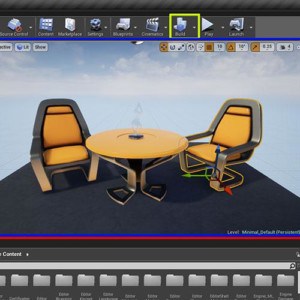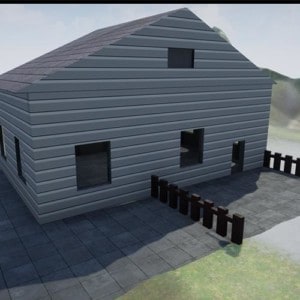Section Navigation
Introduction
Free to use, Unreal Engine 4 can be downloaded and installed to classroom computers as well as personal systems at no cost. This module will do an introductory walkthrough the Unreal Engine 4 interface and tools. This is a great entry point to explore the 3D media fields (such as game development, movies, television, and prototyping). Students who would like to learn more after viewing the walkthroughs can then check out our additional Unreal Engine 4 modules that give step by step tutorials to assist students in creating their own project.
Learning Goals
This module will give students an introduction to Unreal Engine 4 through a video walkthrough. Students will learn the basic interface of the Unreal development kit, the type of projects it can be used for and review all the tools the program offers.
Vocabulary
- Mesh
- Another name for a 3D model. Represents the wireframe of the model which looks like a mesh(net) fabric.
- Brush Mode
- This is an Unreal Engine 4 feature that uses 3D frames to create 3D surfaces within itself. This is often used for blocking out projects in the alpha and design stages.
- Blocking Out
- This is a stage of development and is often part of the design process as well. In 3D levels and environments, often basic shapes are placed according to a blueprint in place of finished assets. This helps to get a feel for the piece and allows testing to begin in the early stages.
- Volumes
- In UDK a volume is a 3D space where something is happening. For example, a kill volume can be placed in water to instantly kill a player if they enter it.
- Post Processing
- Visual effects added to projects. For example, adding a colour correcting filter to an end product can make a desert level look washed out and bone dry if you lower saturation, making it feel more realistic.
- VFX
- Visual Effects. These can be added to levels, like post processing, to create a more immersive environment.
- Vertex
- This a point where edges meet. In a pyramid, the point on top is the vertex.
- Edge
- This a hard angle of a shape. In a pyramid, the edges are at the bottom that form the square base.
- Face
- This is the flat surface of a shape. In a pyramid, the square and 4 triangles are faces
- TARGA or .tga file
- This is a file type that is used in UDK for texture files.
- Origin Point
- This is the point at which an asset’s manipulator exists. This is set in a modelling program, and can be changed in UDK for easily moving assets.
- Skybox
- This is a large sphere that has a special material applied to it to replicate a real sky.
- Material
- This is unique to a texture, where a material has instructions inside of an engine.
- Texture
- This is a base image that is created based on the UV Unwrap of a model. It is what provides the colour and look of a model.
Guiding Questions
- Has anyone ever wondered how video games are made?
- What is a game engine?
- Has anyone heard of Unreal Engine 4?
Curriculum Links
This module aligns with Computer Studies and the Arts curriculum. Students could also use this program to present ideas, create media projects or learn computer programming concepts.
Materials
- Access to the Internet and YouTube
- An Unreal account is also needed for access to the program (which is completely free) – Register for Unreal
Computer Activity
The following videos provide a walkthrough of Unreal Engine 4.
Conclusion
- Download Unreal Engine 4.
- Pair students to login and explore Unreal Engine 4 together. This can help students that might feel less confident when using computers by pairing them with those that feel more confident.
- Give students 20 minutes to explore Unreal Engine 4. After the time allotted have each pair share one question they have about Unreal Engine 4. Can anyone else in the group help answer their question?
Resources
Additional Resources
- The Unreal blog provides news and opportunities related to the engine, sometimes offering helpful tools and tutorials.
- The Unreal wiki page shares resources for anyone using the engine.
- The AnswerHub is a resource for developers to help each other succeed with the software. If you have a problem, it’s a great place to search for solutions and ask questions.
- The Unreal forums offer a space to collaborate with other developers to help solve problems or generate ideas.
Social Media Resources
- The Unreal Engine Twitter account shares videos showing tools, tricks and tips from different developers.
- The Unreal Engine Twitch account shows tutorial series, showcases, games and projects that have been developed using the engine.




